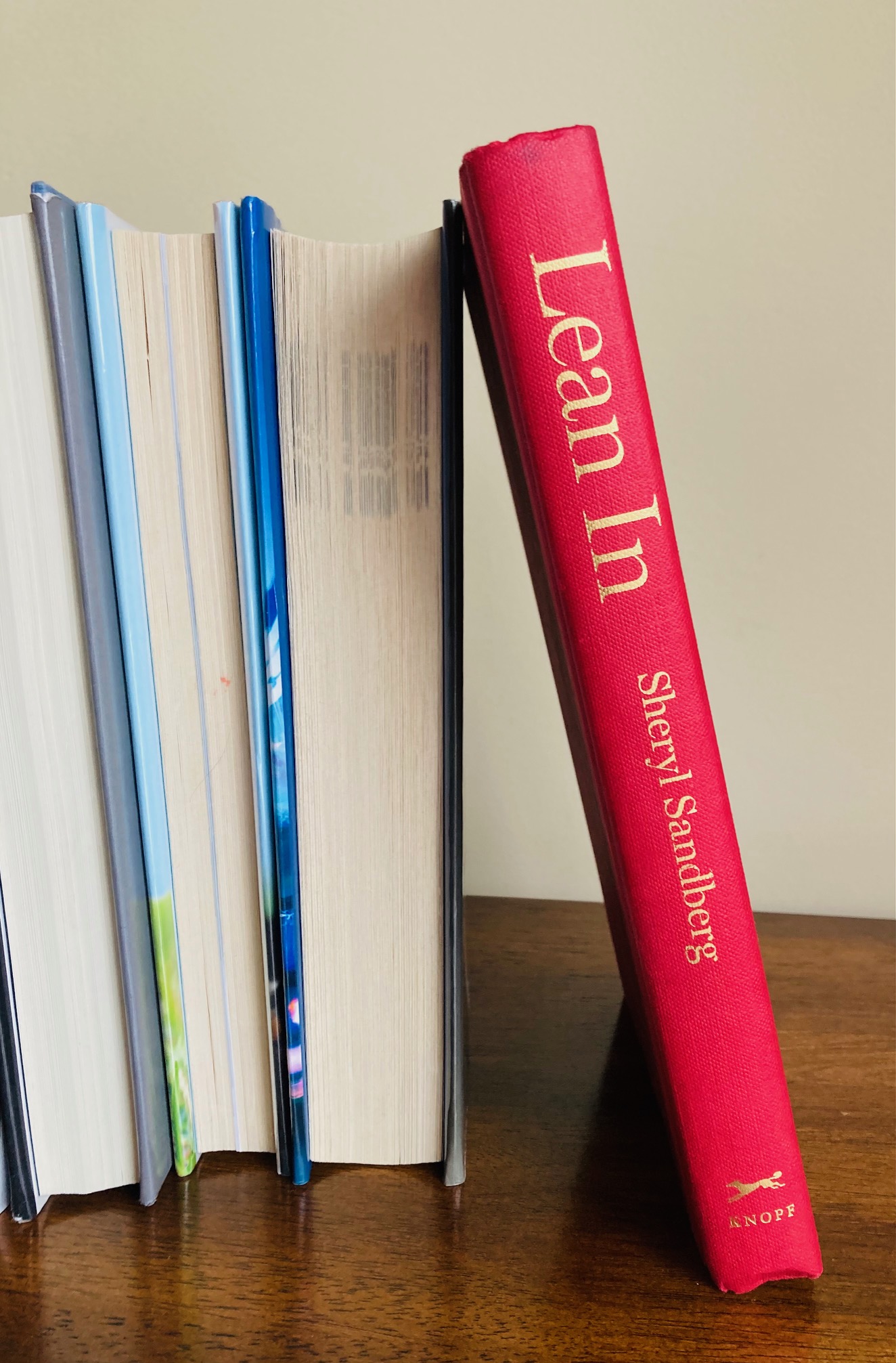Book Review: Lean In by Sheryl Sandberg

I’m a little late to the party on this one, as Lean In; Women, Work and the Will to Lead by Sheryl Sandberg came out in 2013, and I’ve been meaning to read it since then. This may not seem like a long time, but in non-fiction book years, this is a very long time! Sandberg has written a second book about the sudden death of her husband since the release of this one, and of course the pandemic happened, so some of her advice about women in the workplace will likely be different, as Covid has had such a drastic affect on the way we work and the expectations around working from home. Despite these points I still found this book helpful and enlightening to read. I’m in desperate need of some confidence boosters when it comes to leadership in the office, as I lack alot of confidence in this area. Speaking about books on tv, no problem! Delegating work to others in an appropriate manner – not so much!
Book Summary
The intention of this book is to help illuminate how and why women should lean in to their careers, and reasons why we can fall short of this goal. She’s quick to mention that not every woman (or man) wants to do this, and we should never measure success through this one facet of a person’s life alone, but it’s (rightly) assumed that a female is interested in growing their career if they are reading this book to begin with. Sandberg is an extremely accomplished woman; she has two kids, she worked for Google as it grew, then moved to Facebook as their COO, in addition to graduating from Harvard and sitting on the Board of Directors for Starbucks and Walt Disney, among others. Although she likely wasn’t worth this much when she wrote the book, she is now a billionaire due to her stock holdings. Each chapter focuses on a different and simple concept, and each point she makes is backed up with her own personal experiences, or those of close friends and colleagues. Some of the suggestions she makes include ensuring your husband is actually doing 50% of the household duties, not limiting your goals and ambition as you plan a pregnancy and viewing your career path as a jungle gym instead of a ladder. It’s clear she did an incredible amount of research for this book too – the notes section is 34 pages long.
My Thoughts
The real-life examples that Sandberg raises elevates her advice from ‘a great idea’ to a concrete suggestion, and her advice can be applied by both men and women, should men choose to read this book (and I hope they would as it includes sensible ways to help encourage women into leadership positions). For instance on p.73 she touches upon the tricky subject of senior men mentoring junior women, and again keep in mind this was published before the #metoo movement. She cites an executive from Goldman Sachs who in the 1990s, instituted a ‘breakfast and lunch only’ meeting policy in his department, to prevent any evening meetings from appearing like ‘dates’. I can appreciate this as a working mother, as being home for dinnertime is an important part of parenting for both my husband and I, and leaving the house early for a breakfast is significantly easier on our family’s schedule. Instead of claiming gender is irrelevant, she acknowledges the differences in gender in the workplace but offers easy-to-institute ideas to help combat inequality.
Sandberg gives advice to women to follow not only in the boardroom, but in one’s own relationship as well:
“I learned from my mother to be careful about role definition in the beginning of a relationship…At the start of a romance, it’s tempting for a woman to show a more classic “girlfriendly” side by volunteering to cook meals and take care of errands. And suddenly, we’re back in 1955…Instead, use the beginning of a relationship to establish the division of labour…”
-p.116 of Lean In by Sheryl Sandberg, Hardcover Edition
She also spends time dissecting the harmful ways work and gender stereotypes can hurt men, including those Dads who want to take time off when their children are born, but are more heavily penalized for this decision than women – for men a resume gap is much harder to bounce back from or justify. Here in Canada I’m happy to say this is shifting already; paternity leave, as well as maternity leave is offered here, and it’s becoming more common for parents to split the 18 month leave between both partners. The U.S.A. is much farther behind the rest of the world in this respect (they don’t offer much mat leave, if at all), so I hope my neighbors to the south will begin to see this change soon.
I’m aware of the criticisms that have been aimed at this book, but in its defense I’ll point out that it isn’t written for all women (what book truly is?) and is not applicable to all career or life situations. I did however, find it very applicable to myself, which is why I enjoyed reading it so much.







you are so right Marcie, change is super slow! But even since I had kids, I’m hearing more and more people taking extended parental leaves, which is heartening
Yes I know Laila, I wish my American neighbors got to experience this because it’s a wonderful gift for a family. I have high hopes it will become a reality for you guys one day!
Oh you’re reading Dialed In now! So glad to hear that. And yes, a good reminder. hahah I only read those two books like one book apart so I should have remembered. In one ear and out the other apparently haha
I think people like to criticize those they think “have it all” or “want it all” and I don’t think SS was really trying to do either of those things, just sharing her own philosophy and/or experience. SS’s son is working in Banff with my nephew this winter so she may be passing through Calgary at some point; I am trying to plan a trip myself but the fares are really high at the times I am able to go.
Any good mysteries set in Alberta?
Oh that’s interesting! Hopefully he likes Banff haha
If you search Alberta books on my blog you will find a few mysteries set here. Just type in Alberta in the search bar.